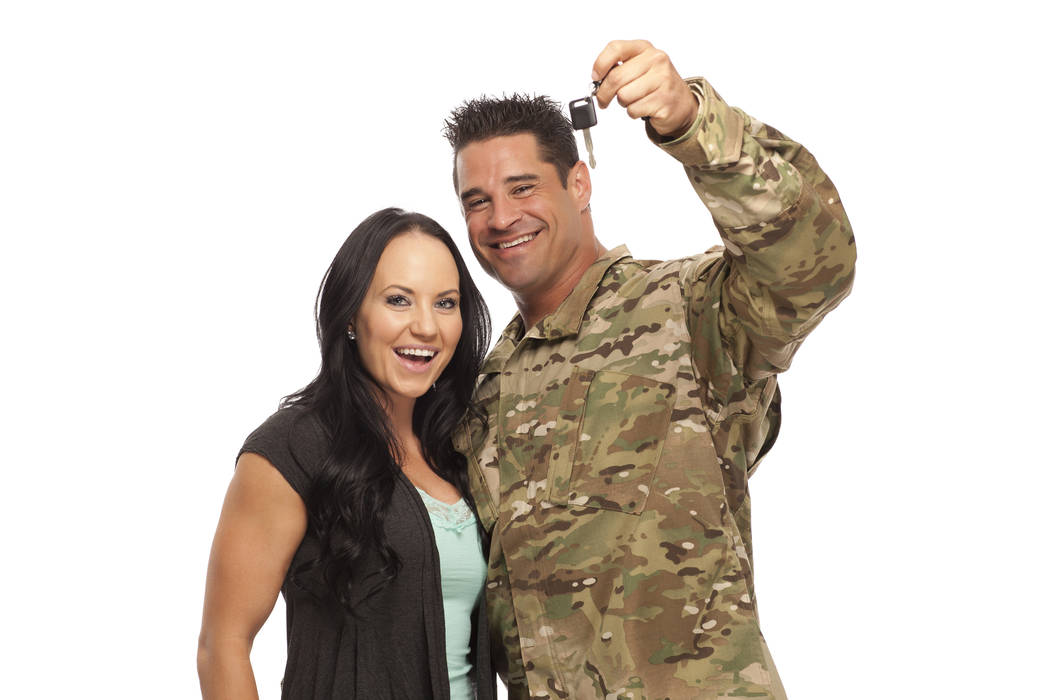Pros and cons of coming up with a down payment for a VA home loan
Many VA borrowers know the VA home loan doesn’t require a down payment.
Indeed, the U.S. Department of Veterans Affairs, which guarantees this type of mortgage, is practically famous for its zero-down option, which opens the doors of homeownership to veterans, active-duty service members, surviving spouses and other VA-eligible buyers. Many VA borrowers have little or no cash to purchase their first home.
“The no-down payment is probably the best-known and widely used feature of our program other than the no mortgage insurance,” says Michael Frueh, director of loan guaranty service at the VA in Washington, D.C. He’s referring to the fact that VA loans do not require borrowers to pay for mortgage insurance, which is usually the case when you don’t put down 20 percent.
Though a down payment isn’t required for a VA loan, borrowers can still make one. Should they? Or is the no-money-down strategy so attractive that a down payment never makes sense?
The answer depends on the borrower’s type of military service, homeownership experience, cash position and other factors. Bankrate analyzes the pros and cons of coming up with a VA loan down payment.
DOWN PAYMENT LOWERS FUNDING FEE
The chief benefit of making a down payment is paying a lower funding fee, says Joe Parsons, senior loan officer for PFS Funding, a mortgage company in Dublin, California.
The funding fee supports the loan guaranty, which encourages lenders to offer VA loans at lower rates and with easier qualifying guidelines.
Borrowers typically finance their funding fee as part of their loan amount, rather than pay it upfront at closing.
VA borrowers in the Reserves or National Guard pay a slightly higher funding fee with or without a down payment.
Borrowers who have a service-connected disability are generally exempt from funding fees.
FIRST-USE FUNDING FEES LOWER WITH DOWN PAYMENT
The funding fee for eligible first-time homebuyers is 2.15 percent of the loan amount with no down payment.
With a 5 percent down payment, the fee is reduced to 1.5 percent. With 10 percent or more down, it drops to 1.25 percent.
For a $200,000 loan with a 3.5 percent interest rate and 30-year term, those down payments would save the borrower about $7 and $9 each month, respectively, compared with the zero-down option.
These figures don’t take into account how the higher down payment would affect principal and interest payments. They show only the funding fee portion of the payment.
SUBSEQUENT FUNDING FEES HIGHER
The funding fee is 3.3 percent for VA buyers who use the program to buy their next home if they don’t make a down payment.
With a down payment, the funding fee for subsequent use again drops to 1.5 percent with 5 percent down and 1.25 percent with 10 percent down.
For example, the monthly principal and interest payment for a $200,000 home loan with no down payment, a 3.5 percent interest rate and 30-year term is $898.
Financing the 3.3 percent funding fee adds $6,600 to the loan amount and raises the payment by $30 to $928.
A 5 percent down payment reduces the fee to $3,000 and the payment to $912.
That means the borrower would save about $16 each month, says Mike Dill, corporate trainer at Guaranteed Rate, a mortgage company in Chicago.
DOWN PAYMENT LOWERS MONTHLY PAYMENT
Don’t forget that a down payment also lowers the borrower’s base loan amount and monthly mortgage payment.
“The 5 percent down payment factors in (to the savings) as well because you’re financing 5 percent less,” Dill explains.
For borrowers who need to “target their payment within a certain range,” to use Dill’s characterization, a down payment could mean the difference between qualifying for the loan and not qualifying.
DOWN PAYMENT FINANCES FUTURE CLOSING COSTS
A down payment could make it easier to sell a home if the buyers want to move before they build equity through monthly payments or appreciation and without paying closing costs out of pocket.
Closing costs to sell can be 6 percent or more of the home’s value.
“If you didn’t have any equity, potentially you’d have to write a check for that amount,” Frueh says.
The alternative could be a default or even foreclosure.
OTHER USES FOR YOUR CASH
Despite these advantages, only 22 percent of VA buyers made a down payment in 2015, according to Frueh. The other 78 percent bought with no money down. The VA doesn’t track how many subsequent-use borrowers rolled over equity from a prior home they sold toward a down payment.
Frueh says the average VA borrower has only about $10,000 at closing.
That cash might be better used for home-related purchases, repairs or other purposes.
As Dill says, “The advantages of putting money down are so slim compared with keeping that money in case you have repairs or as a safety net.”
CONSIDER RETURN ON INVESTMENT
Parsons says borrowers could invest the money they didn’t use for a down payment in other assets or use it to pay off consumer debt, such as an auto loan, credit card or student loans.
A borrower who purchased a $200,000 home and later sold it for $300,000 could net $80,000, use $30,000 to make a 5 percent down payment for a new $600,000 home and keep $50,000 in cash, tax-free, he suggests.
“I think that’s a great strategy,” he says.

















